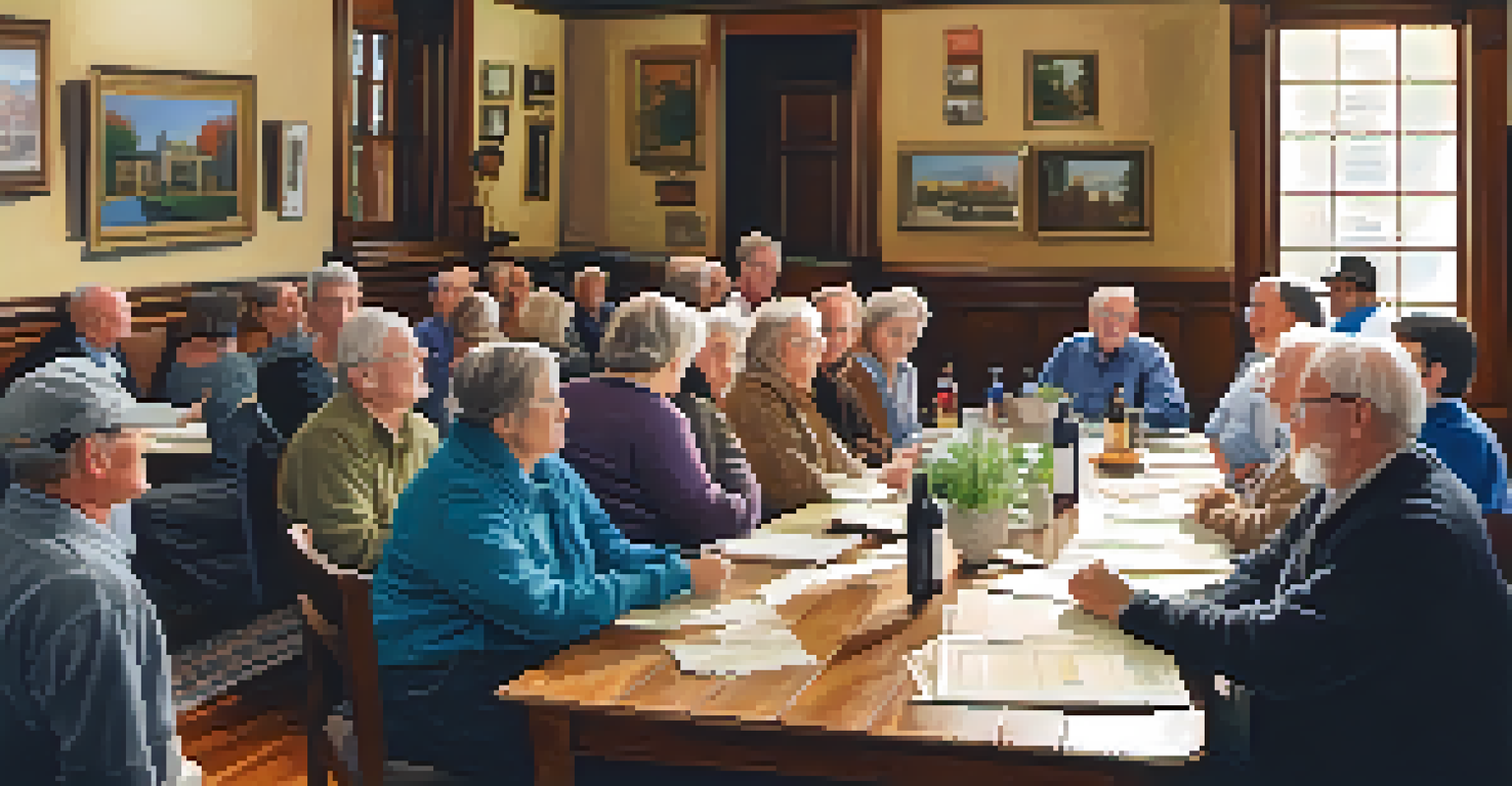The Role of Local Regulations in Historic Property Renovation

Introduction to Historic Property Renovation Regulations
Renovating historic properties is a rewarding endeavor, but it comes with its own set of challenges. Local regulations play a crucial role in ensuring that these projects preserve the character and integrity of historical sites. Understanding these regulations is essential for homeowners and developers alike, as they can significantly influence the renovation process.
Preservation is a form of activism. It is a way to fight for the future by preserving the past.
These regulations often stem from a desire to maintain the historical significance of a property while allowing for modern updates. They typically cover aspects such as architectural styles, materials, and even the types of renovations permitted. Ignoring these can lead to costly fines or even the halting of a renovation project.
In this article, we will explore how local regulations affect the renovation of historic properties, offering insights into compliance, community engagement, and the overall impact on property value.
Types of Local Regulations Affecting Renovations
Local regulations can vary widely depending on the municipality and the specific property in question. Common types include zoning laws, building codes, and preservation ordinances. Zoning laws dictate how a property can be used, while building codes ensure safety standards are met during renovations.

Preservation ordinances are particularly important for historic properties. These laws may require that any changes made to the exterior of a building maintain its historical appearance. This can include restrictions on paint colors, window styles, and even landscaping.
Understanding these types of regulations is essential for anyone looking to undertake a renovation. Familiarity with the specific rules that apply to a property can save time, money, and hassle in the long run.
The Importance of Compliance in Renovation Projects
Compliance with local regulations is not just about following the law—it's also about respecting the community's history. When renovations are carried out in accordance with these rules, they help preserve the character of the neighborhood. This can enhance the overall appeal of the area, benefiting both current and future residents.
Historic preservation is not just about saving buildings; it’s about saving our communities and our history.
Failing to comply with regulations can result in serious consequences, such as fines or the requirement to undo completed work. For instance, if a homeowner replaces original windows with modern alternatives without permission, they might be ordered to restore the original style, leading to additional costs and delays.
Moreover, compliance can influence a property's market value. Homes that are renovated in accordance with local guidelines often see a better return on investment, making it a wise decision to adhere to these regulations.
Engaging with Local Historical Societies
One effective way to navigate local regulations is by engaging with local historical societies. These organizations often have valuable resources and knowledge about the specific requirements for renovating historic properties. They can provide guidance on best practices and connect homeowners with experienced contractors.
Additionally, many historical societies advocate for the preservation of local heritage, making them a key ally in the renovation process. They may even offer financial assistance or grant programs to support approved renovations, helping to ease the financial burden on homeowners.
By fostering a relationship with these societies, renovators can gain insights that lead to more authentic and compliant renovations, ultimately benefiting the entire community.
Obtaining Necessary Permits for Renovation
Before starting any renovation project on a historic property, obtaining the necessary permits is crucial. This process varies depending on local regulations and the scope of the work being proposed. Typically, homeowners must submit detailed plans outlining the intended renovations for review by local authorities.
Permits ensure that renovations comply with safety standards and historical preservation guidelines. Skipping this step can lead to legal complications and may even result in having to redo work that was done without proper authorization.
To simplify the permitting process, it’s advisable to consult with local officials early in the planning stages. This proactive approach can help identify potential issues and streamline the approval process.
Impact of Local Regulations on Property Values
Local regulations can have a significant impact on property values, especially in historic districts. Properties that are well-maintained and renovated according to regulations often see an increase in value due to their enhanced appeal and historical relevance. Buyers are usually willing to pay a premium for homes that have retained their character and charm.
Conversely, properties that do not comply with local regulations may suffer from decreased value. If a home is deemed unfit due to improper renovations, it can deter potential buyers and lead to a decline in the neighborhood’s overall desirability.
Thus, adhering to local regulations not only preserves history but also serves as a smart investment strategy for homeowners.
Challenges Faced During Renovation Projects
Renovating historic properties can present unique challenges due to the strict nature of local regulations. Homeowners may find themselves navigating complex approval processes and facing unexpected restrictions. For example, they may discover that certain architectural features must be preserved or restored, which can complicate renovation plans.
Additionally, sourcing materials that meet regulatory standards can be a daunting task. Many historic guidelines require the use of specific materials that align with the original construction. This can lead to delays if suitable materials are not readily available.

Despite these challenges, many renovators find the process rewarding. The end result—a beautifully restored property that honors its history—can make all the effort worthwhile.
Conclusion: Embracing Local Regulations for Success
In conclusion, understanding and embracing local regulations is key to successful historic property renovation. These guidelines not only protect the integrity of historical sites but also enhance community value. By engaging with local authorities, historical societies, and following the necessary procedures, renovators can navigate the complexities of the process.
While challenges may arise, the benefits of compliance far outweigh the drawbacks. Homeowners can enjoy a greater return on their investment and contribute positively to their neighborhoods.
Ultimately, preserving our architectural heritage through thoughtful renovations ensures that future generations can appreciate the beauty and history of these remarkable properties.